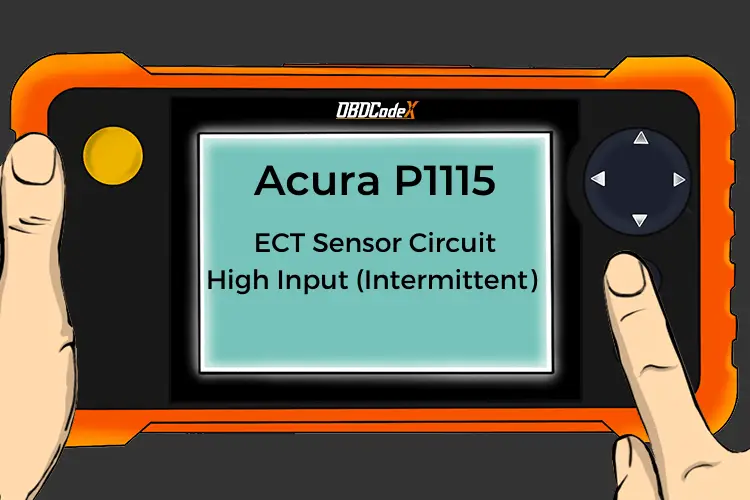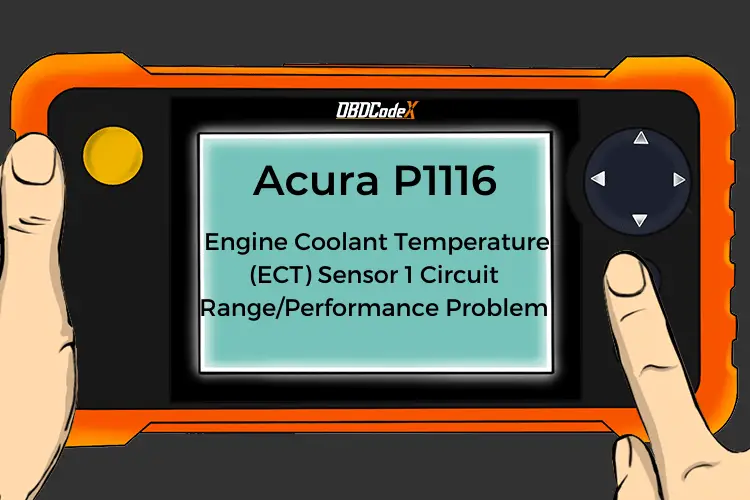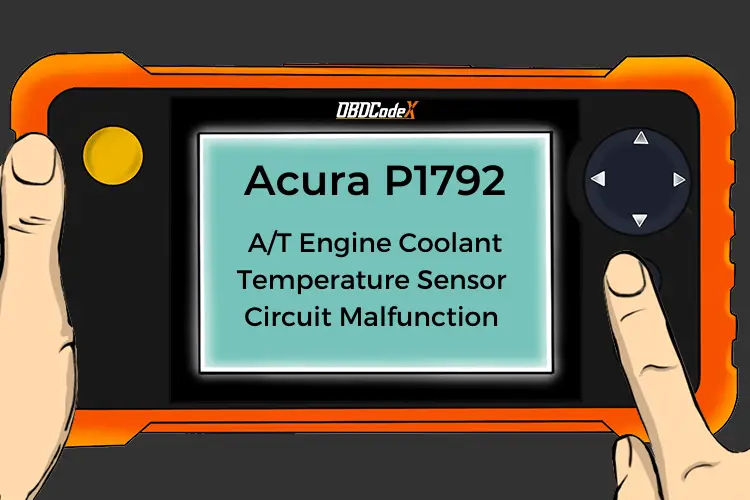P00B6: Radiator Coolant Temperature/Engine Coolant Temperature Correlation
Is your scanner showing P00B6?
No worries. We'll show you what it means and how to deal with it.
P00B6: Radiator Coolant Temperature/Engine Coolant Temperature Correlation
OVERVIEWWhat Does The P00B6 Code Mean?
This generic powertrain diagnostic trouble code (DTC) typically applies to many OBD-II vehicles. That may include many automakers but accidentally this DTC seems more common on Chevrolet/Chevy and Vauxhall vehicles.
Anytime that I have been faced with diagnosing a code P00B6, it has meant that the powertrain control module (PCM) had detected a discrepancy in the correlating signals between the radiator coolant temperature sensor and the engine coolant temperature (ECT) sensor.
In order to make sure that coolant is flowing as intended between the radiator and the engine cooling passages, coolant temperature in the radiator is sometimes monitored in comparison with the temperature of coolant in the engine.
ECT sensor design usually consists of a thermal resistor that is dipped in a hard resin and sealed in a metal or plastic housing. Brass is the most popular of these housing materials because of its durability. In most cases, the ECT sensor is threaded so that it may be screwed into a coolant passage in the engine intake manifold, cylinder head, or block.
The level of thermal resistance in the ECT sensor decreases as coolant warms and flows across it. This leads to increased ECT sensor circuit voltage at the PCM. As the engine cools, sensor resistance increases and ECT sensor circuit voltage (to the PCM) is reduced as a result. The PCM recognizes these fluctuations in voltage as changes in engine coolant temperature. Fuel delivery and ignition timing strategy are among the functions affected by actual engine coolant temperature and input data from the ECT sensor.
The radiator coolant temperature sensor monitors coolant temperature in much the same manner as the ECT sensor. It is typically inserted into one of the radiator tanks but may also be fitted into a pressurized coolant reservoir.
If the PCM detects voltage signals from the ECT sensor and the radiator coolant temperature sensor which differ from one another by greater than the maximum allowable parameter, a code P00B6 will be stored and a malfunction indicator lamp (MIL) may be illuminated. Multiple drive cycles with a failure may be required for MIL illumination.
What Are The Symptoms Of The P00B6 Code?
Symptoms of a P00B6 engine code may include:
- Excessively rich exhaust
- Drivability issues
- Poor idle quality
- Seriously diminished fuel efficiency
What Are The Potential Causes Of The P00B6 Code?
Causes for this engine code may include:
- Defective ECT sensor
- Faulty radiator coolant temperature sensor
- Insufficient coolant level
- Shorted or open circuits or connectors
- Bad PCM or PCM programming error
How Serious Is This P00B6 Code?
As ECT sensor input is critical to fuel delivery and ignition timing strategy, the conditions that contribute to a stored code P00B6 should be addressed with urgency.
How Can You Fix The P00B6 Code?
An effort should be made to ensure that the engine is full of coolant and not overheating before attempting to diagnose any stored ECT sensor related codes. Before proceeding, the engine must be full of the proper coolant and not overheating under any circumstances.
A source of reliable vehicle information, a diagnostic scanner, a digital volt/ohmmeter (DVOM), and an infrared thermometer with a laser pointer will be required to diagnose a code P00B6.
A visual inspection of ECT sensor and radiator coolant temperature sensor system wiring and connectors should be your next step if the engine is not overheating,.
Prepare to retrieve all stored codes and freeze frame data by connecting the scanner to the vehicle diagnostic port. Once this information is retrieved, write it down as it may be helpful as you continue with the diagnosis. Next, clear the codes and test-drive the vehicle to see if the code is reset.
Your vehicle information source will provide you with wiring diagrams, connector pin-out charts, component testing specifications, and connector views. These things will help you to test individual circuits and sensors with the DVOM. Test individual system circuits using the DVOM only after the PCM (and all related controllers) have been disconnected. This will help to guard against controller damage. Connector pin-out charts and wiring diagrams are particularly helpful for testing individual circuit voltage, resistance, and/or continuity.
How to test the radiator coolant temperature sensor & the ECT sensor
- Locate the correct component testing procedures/specifications and wiring diagram from the vehicle information source
- Disconnect the sensor to be tested
- Place the DVOM on the ohms setting
- Use the DVOM test leads and your component testing specs to test each sensor
- Any sensor which does not comply with manufacturer’s specifications should be considered defective
How to probe for reference voltage and a ground at the radiator coolant temperature sensor and ECT sensor
- With the key on and the engine off (KOEO), connect the positive test lead of the DVOM to the reference voltage pin of each sensor connector (test one sensor at a time)
- Use the negative test lead to probe the ground pin of the same connector (at the same time)
- Test for reference voltage (typically 5-volts) and a ground at the individual sensor connectors
How to test radiator coolant temperature sensor and ECT sensor signal voltage
- Reconnect the sensors
- Probe the signal circuit of each sensor with the positive test lead of the DVOM
- The negative test lead must be connected to the ground pin of the same connector or to a known good engine/battery ground
- Use the infrared thermometer to check actual coolant temperature at each of the sensors
- You may either use the temperature to voltage chart (found within the vehicle information source) or the data display on the scanner to determine if each sensor is functioning properly
- Compare actual voltage/temperature with desired voltage/temperature
- Each sensor should reflect actual coolant temperature or voltage. If either of them does not, suspect that it is faulty
Test individual signal circuits at the PCM connector if the individual sensor signal circuits reflect the correct degree of voltage at the sensor connector. This may be done using the DVOM. If the sensor signal detected at the sensor connector is not present at the corresponding circuit of the PCM connector, an open circuit between the sensor in question and the PCM exists.
Only after exhausting all other possibilities, and if all radiator coolant temperature and ECT temperature sensors and circuits are within specifications, may you suspect PCM failure or a PCM programing error.
Locating technical service bulletins (TSB) which are applicable to the vehicle make and model, symptoms, and codes stored may help you with your diagnosis
Recommended Parts
Below are some recommended auto parts to help you address the trouble code affecting your vehicle and get it running smoothly again:
Note: During the purchasing process, please check carefully whether the part you want to buy fits your car!
Reference Sources
P00B6: Radiator Coolant Temperature/Engine Coolant Temperature Correlation, OBD-Codes.











